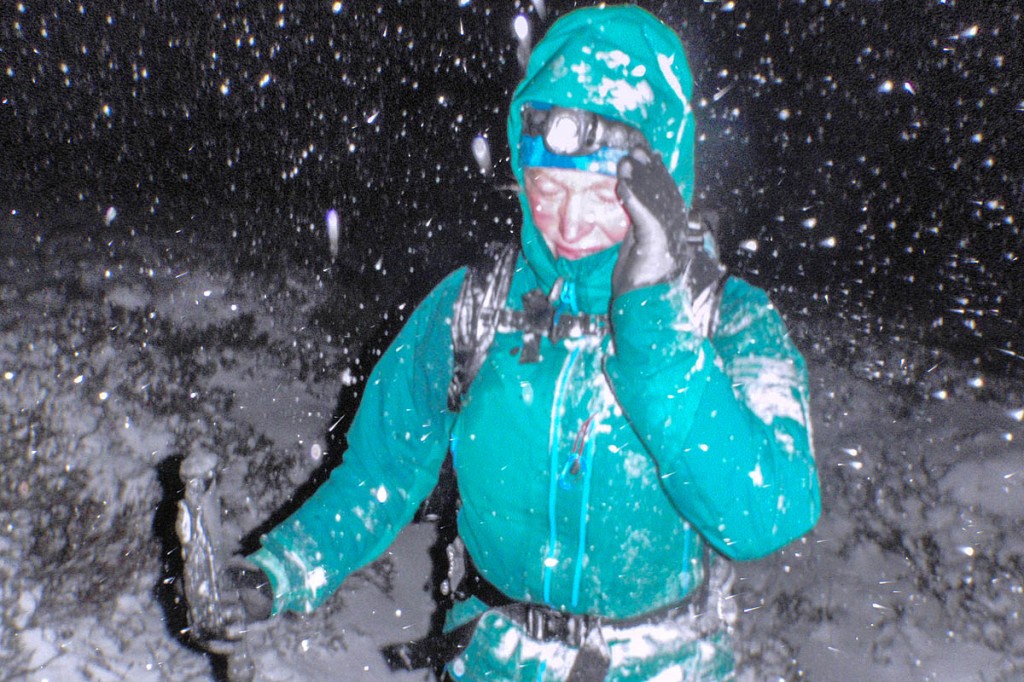
Classic hypothermia conditions: it’s dark, you’re tired and feeling low, you feel damp and shivery and can’t be bothered sorting things out
A mountaineering expert has warned hillgoers are still at risk of hypothermia during the continuing winter even when wearing modern technical clothing.
Unchecked, the condition can lead to poor decision making on the mountain and can ultimately be fatal.
Heather Morning, mountain safety advisor with the Mountaineering Council of Scotland, offered a series of hints to avoid getting to the hypothermic stage, when the core body temperature becomes lowered to dangerous levels. She said it is essential climbers and walkers know how to avoid it and recognise it when they see the signs.
Ms Morning said: “A common misconception among hillgoers is that modern clothing is so good that hypothermia is not an issue.
“That is simply wrong. Within minutes of being stationary on the hill people will feel themselves start to cool down, and there are a number of other factors which people should be aware of and avoid.”
Risk factors for hypothermia include:
- Sweating while ascending a mountain, then cooling and not adding extra layers
- Remaining stationary on the hill without adequate clothing and protection
- Not fuelling the body sufficiently with enough calories and fluids
- Fighting off illness or lack of sleep/fatigue
- Over-exertion
- Low morale
- Wearing layers that don’t wick away the moisture, such as cotton-based clothing which absorbs body sweat and moisture from the environment, leaving the wearer cold and damp.
- Insufficient layering and windproof outer clothing to combat the effects of wind chill.
She added that, by taking some simple steps the risk of hypothermia can be reduced.
- Always add an extra layer as you get higher up the mountain
- Swap your gloves for a dry pair when you have finished your ascent
- Always carry an additional large synthetic duvet jacket which will fit on over the top of everything you are wearing and put it on for lunch stops or any other time you’re at risk of cooling, such as in descent
- Make sure you eat enough. Even the best clothing can only keep heat in, not generate it.
Early signs of hypothermia can be feeling cold, shivery and damp, and the ‘can’t be bothered’ syndrome, where, for example, a person perhaps has a dry pair of gloves in their rucksack, but feels it’s just too much effort to get them out.
If left unchecked, these mild symptoms can develop into irritability and irrational behaviour, poor decision making and, ultimately, collapse and even death.
More information is on the MCofS website.
Phil Anderson
19 February 2015Here in the Peak District, which is not much above 2000 feet above sea level, and being very close to towns and villages a lot of visitor's come to have a look at the Peak and walk on some of the pathways and before you know it the cloud has come down and you can get caught out, so even at low level have extra cloths, food and maps and compass's and be able to use them, and remember that mobile phones don't always work in mountain areas.
Richard Warren
21 February 2015Good article Heather and timely. Hope your key messages get across. Best wishes from the Lakes
Richard Warren
Heather Morning
23 February 2015Thanks Richard :-) H
John McGrath
24 February 2015The "can't be bothered" syndrome comment made me take notice. Been there.
When you're cold and wet the last thing you want to do is stop, take rucksack off and get something to eat or additional clothing to put on.
When this happens you must remain switched on and act.